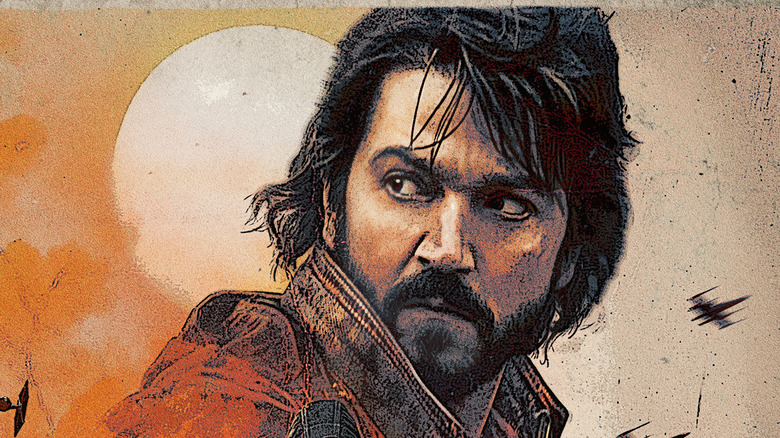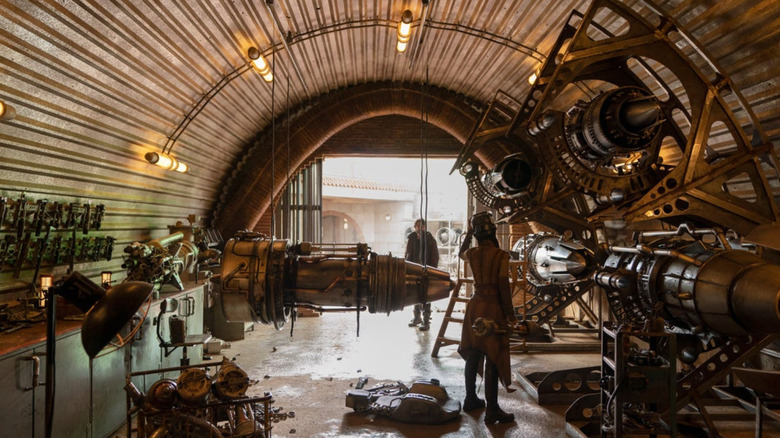We Need To Talk About The Blue Noodles In Andor
We've all had those days where we're just too busy to take breaks. Of course, this is a reflection of our work-obsessed capitalist society, but that's another piece for another time. So, what do we do when we don't have enough time in the day to cook? We order takeout. I'll admit that I've written many pieces on /Film thanks to the fuel I get from a meal I ordered on Doordash.
If "Andor" is any indication, this is the same mindset that those in the "Star Wars" universe have. In the first episode of the series, we see an Imperial agent eating a small takeout box of distinctly blue noodles (what's with "Star Wars" and blue food?). He gets one forkful in his mouth before boot-kisser supreme Syril Karn (Kyle Soller) interrupts his semi-lunch break. Sure, he works for galactic fascists, but we all know the feeling of getting rudely denied the chance to savor your food.
These noodles are a small detail you'll only find if you're really looking hard at your screen. They by themselves don't deserve a whole article like this written about them, but they do represent something that makes "Andor" feel so unique as a "Star Wars" show. That, of course, is just how immersive the world of "Andor" is, starting from its smallest details.
The old world-building is back
Something that is quite obvious when watching "Andor" is that all the sets and props scattered on-screen look real. While there are certain benefits that ILM's StageCraft bring to the "Star Wars" shows, the backgrounds are a mixed bag between realistic and extremely fake. Given how expansive the sets of "Andor" were, overusing this tech would have not only cheapened the look of the show but also would have killed its immersive feeling.
With most other "Star Wars" shows, characters are too busy going from place to place. This means that filling up each scene with setting-specific details isn't that much of a priority, but on "Andor," it is. From the murky city of Preox to the tight corridors of Ferrix and especially the luscious greens of Kenari, all of the locations we've seen in the show thus far feel lived in and real. This is shown in small details like the miner glove rack in the first episode, as well as the ruggedness of the repair shop that Biz works in. And, of course, in the blue space noodles we see a character eating.
If you remember my piece on "Andor" expectations and the current state of "Star Wars" shows, you'll remember that I mention that the world-building of the old films needs to return in a major way. Every setting and prop felt rich in backstory, whereas modern "Star Wars" sequels just rotate between planet archetypes. We still have nine more episodes to go, but so far, "Andor" is achieving just what I hoped it would. Let's hope we continue to see more science fiction cuisine, too.

